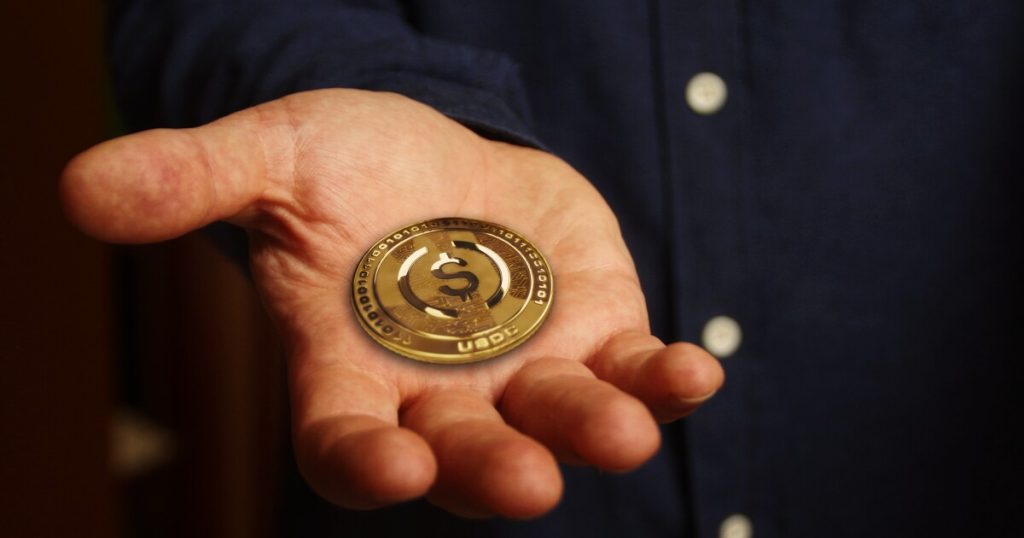Adobe Stock
Two centuries later, we may be witnessing the reversal of that process. Stablecoins, namely digital tokens designed to maintain a fixed value against fiat currency, are
They are not
Unlike commercial bank deposits, which are liabilities on a bank’s balance sheet, a stablecoin is structured as a form of digital asset: a token representing a claim to a segregated pool of backing assets, often short-term government securities or cash equivalents.
The distinction matters.
When depositors hold bank deposits, they are creditors and they bear risk that the bank may fail, though they remain insured within limits. When stablecoin holders hold their tokens, they are not creditors but owners of a digital asset whose value depends on the issuer’s governance and the liquidity of the backing assets.
That makes stablecoins, in a legal sense, closer to commodities than deposits, and yet, economically, they behave like money. They are used for payments, savings and settlement in an expanding set of financial transactions.
In short: Stablecoins are private property that acts like public money.
If money defines the financial system, then who issues it defines its risk structure. Traditional banking turns deposits into credit: Customer funds become loans, creating money in the process. Stablecoins turn deposits into collateral: Customer funds are recycled into government paper or short-term money-market instruments, creating no new credit but amplifying the demand for sovereign debt.
This shift from credit creation to collateral creation may seem benign — after all, the assets are safe. But scale matters. If large portions of household and institutional liquidity migrate into stablecoins, the composition of private-sector funding changes dramatically. Banks become more reliant on wholesale funding; the yield curve flattens; and monetary policy transmission becomes less direct.
In effect, stablecoins de-intermediate the money multiplier. They freeze liquidity rather than recycle it through the economy.
Regulation, both in the U.S. and abroad, seeks to make stablecoins “safe.” Proof-of-reserves, redemption rights, capital standards: all welcome and necessary. Yet the safety is partial.
A well-regulated stablecoin is only as stable as the market in which its reserves are liquid. If investors redeem en masse, the issuer must sell assets (typically Treasury bills) into a failing market. The result is a paradox: Stablecoins that stabilize value for holders can destabilize the very instruments that back them.
This is not hypothetical. Even money-market funds, with decades of regulation and supervision, have required central bank backstops in moments of stress. A large, unbacked or offshore fund could trigger similar dynamics but without access to the Fed’s discount window or deposit insurance.
The deeper question is not whether stablecoins are safe, but whether money should once again be private.
Private money tends to privilege those who issue it. For 19th century banks, that meant seigniorage, namely the profit from creating currency. For today’s technology firms and crypto issuers, it means capturing the yield on reserves and data on user transactions.
The economic power, the ability to issue what behaves like money without being a bank, shifts monetary sovereignty from public institutions to private enterprises. It is not that these entities are bad actors; it is that their incentives are different. A stablecoin issuer optimises for liquidity and growth, not for credit intermediation or public trust.
Regulation can align incentives, but only to a certain extent. Once money is transformed into code, the boundaries of jurisdiction begin to blur. A token issued in one country can circulate globally, bypassing national oversight.
Thus, even if each jurisdiction regulates responsibly, the global architecture may still recreate the vulnerabilities of a shadow monetary system, decentralized in technology, centralized in influence and deeply entangled with sovereign finance.
The path forward cannot be simple prohibition. Stablecoins have clear utility in payments, remittances and digital markets. But neither can it be laissez-faire legitimization.
What is needed is a new settlement between public and private money.
Central banks should clarify the conditions under which stablecoins can access payment infrastructure or liquidity support.
Regulators should treat systemic stablecoin issuers not merely as financial institutions, but as monetary actors whose scale affects policy transmission.
Banks themselves should experiment with tokenized deposits and interoperable systems that preserve credit creation within the regulated perimeter.
Stablecoins are not a passing crypto trend. They are the next chapter in the long contest between the public claim to money as a social good and the private claim to money as an asset.
The last time that contest was unresolved, it took a century of crises to establish the balance we now take for granted. We may not have a century to get it right again.

